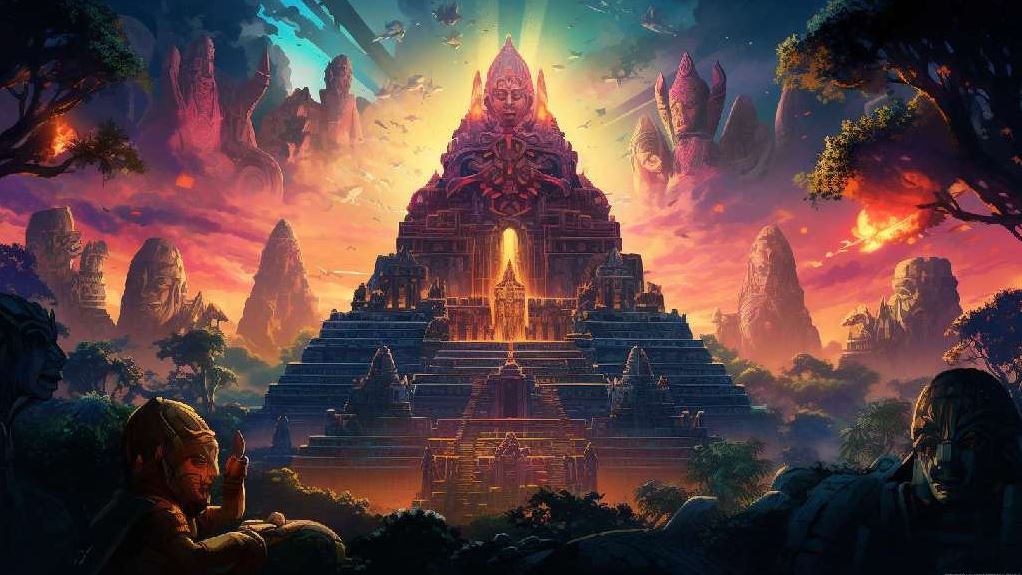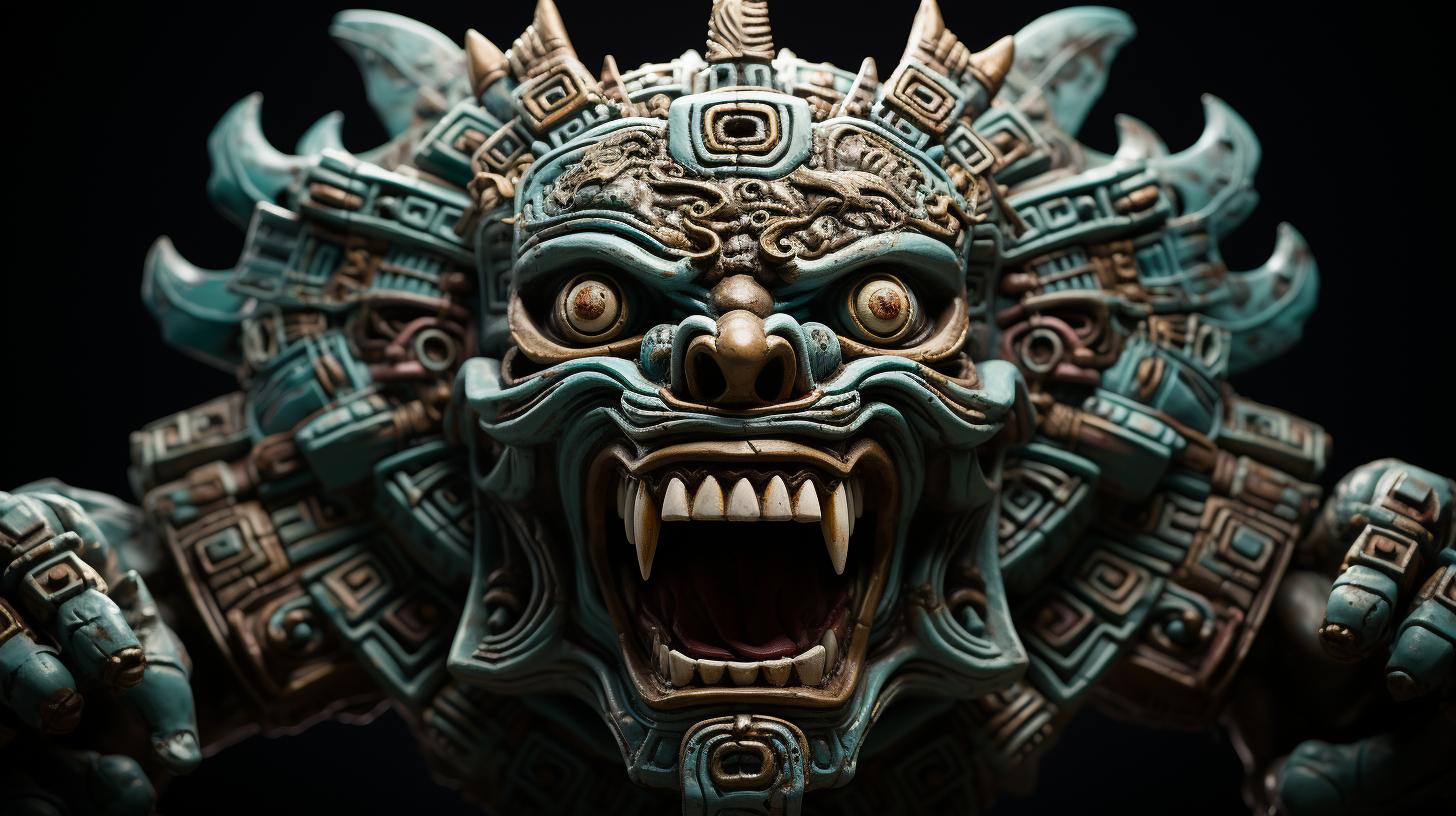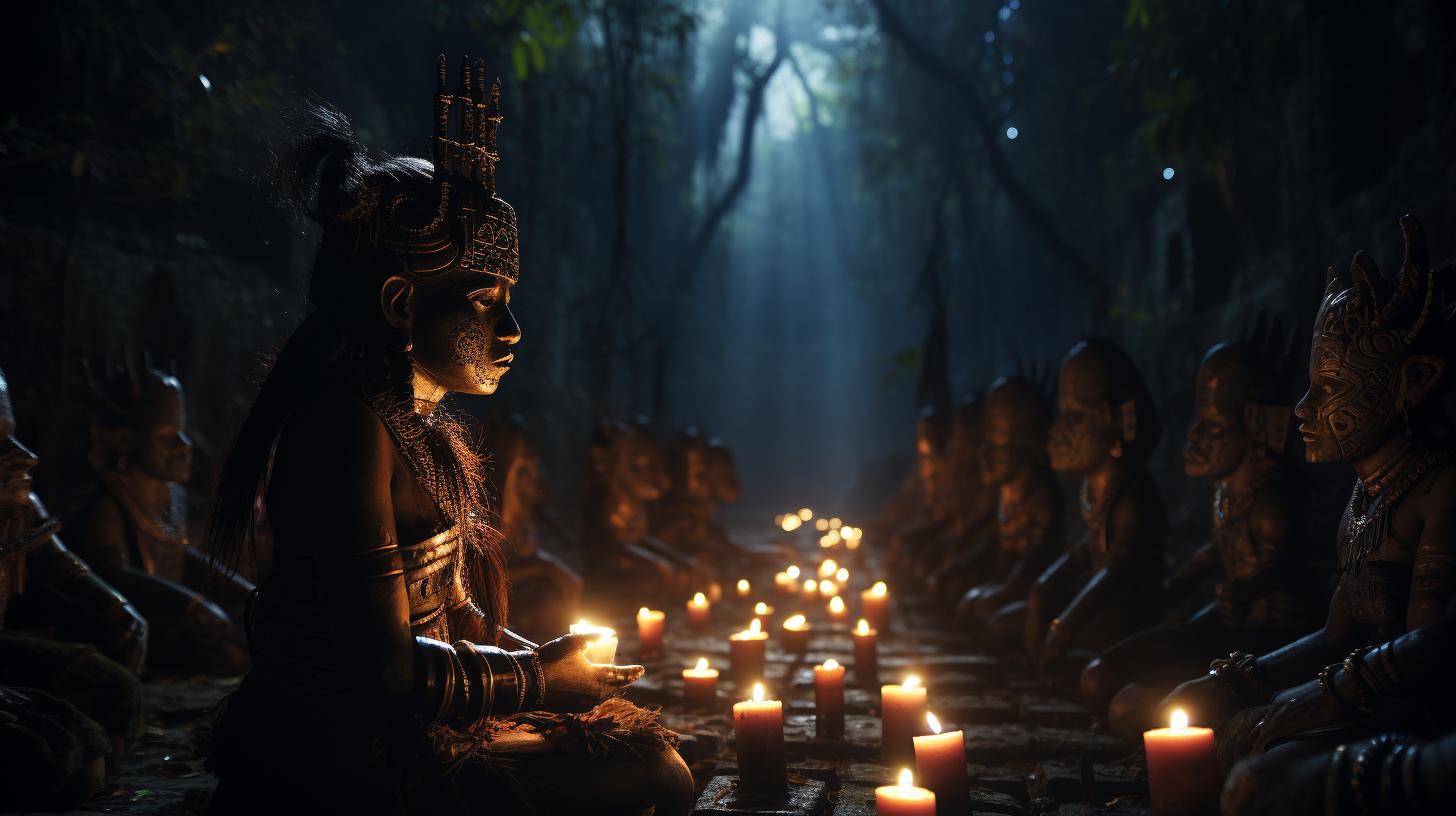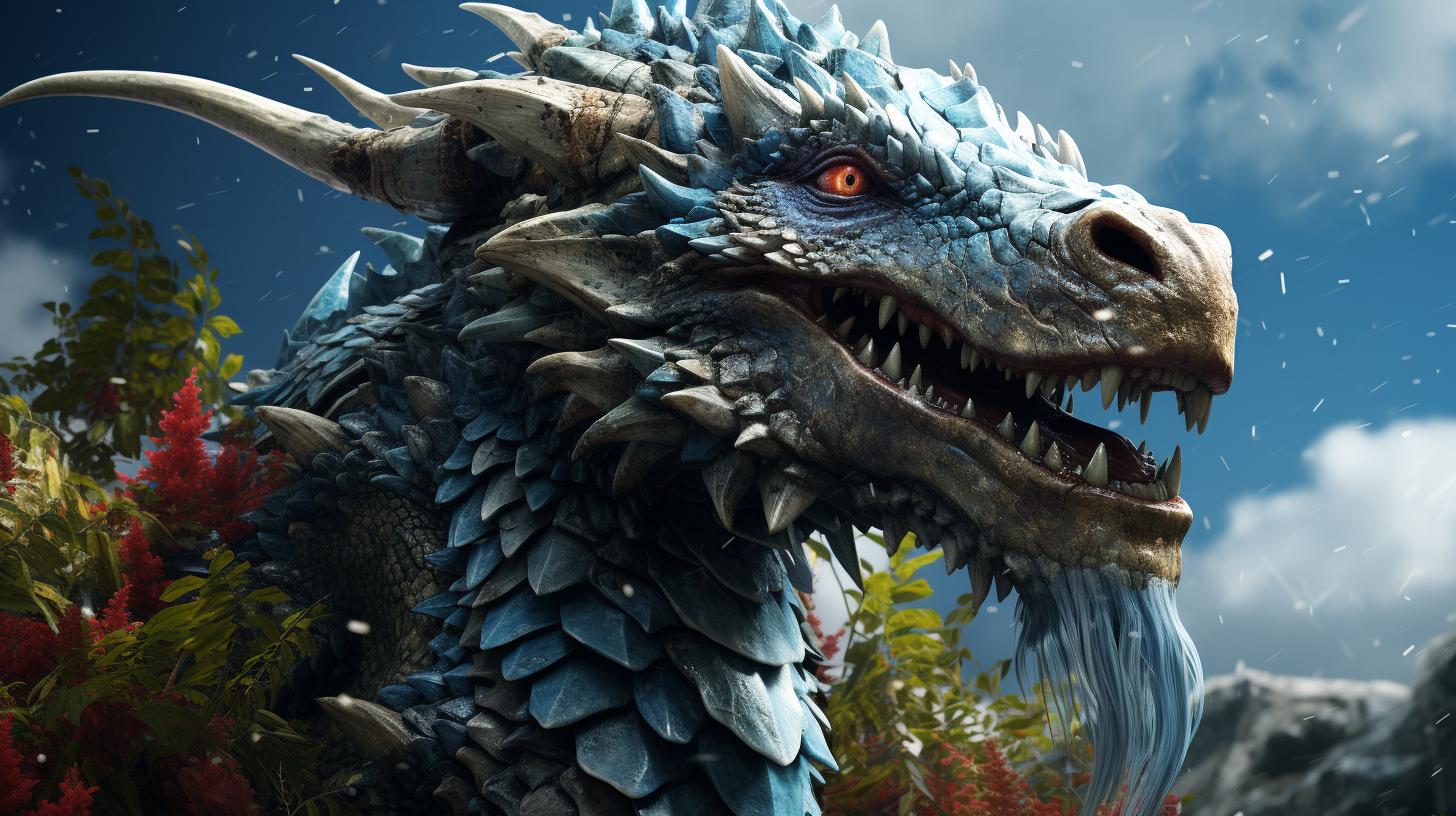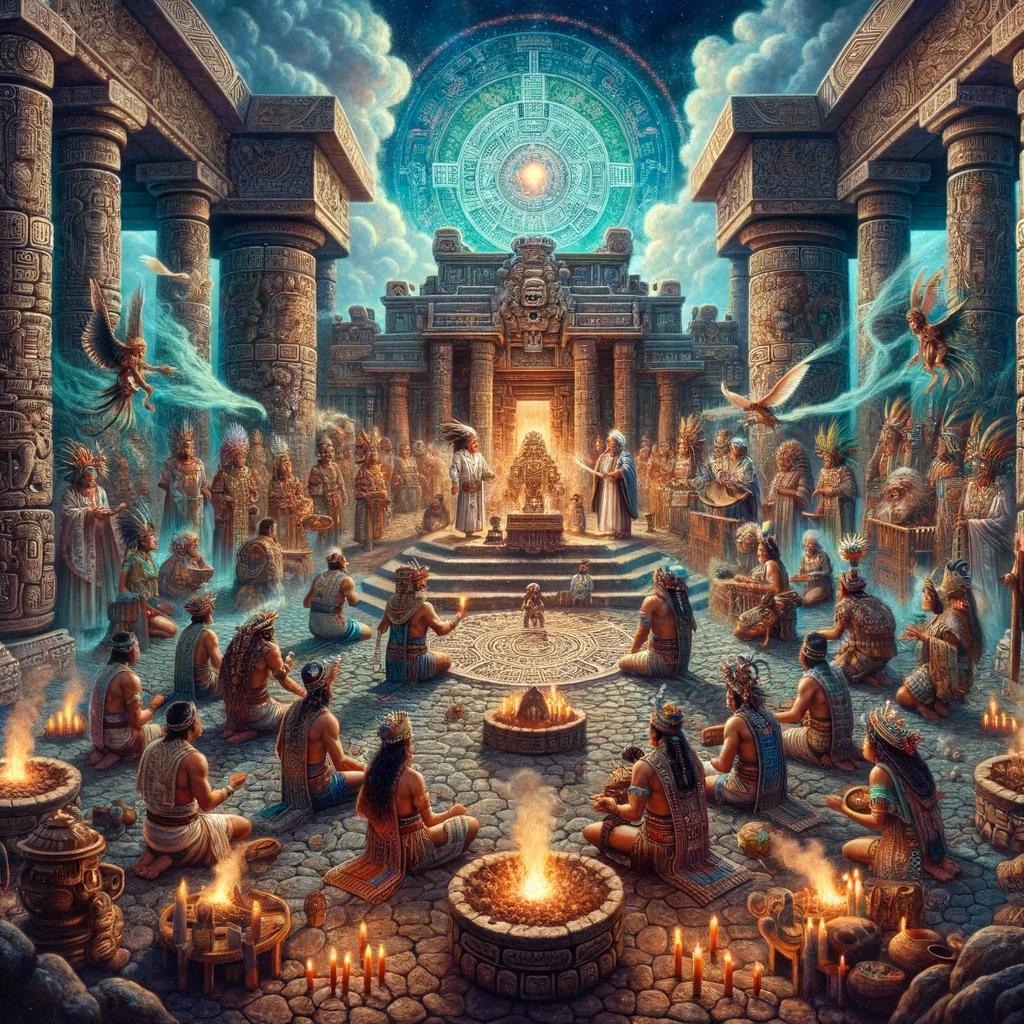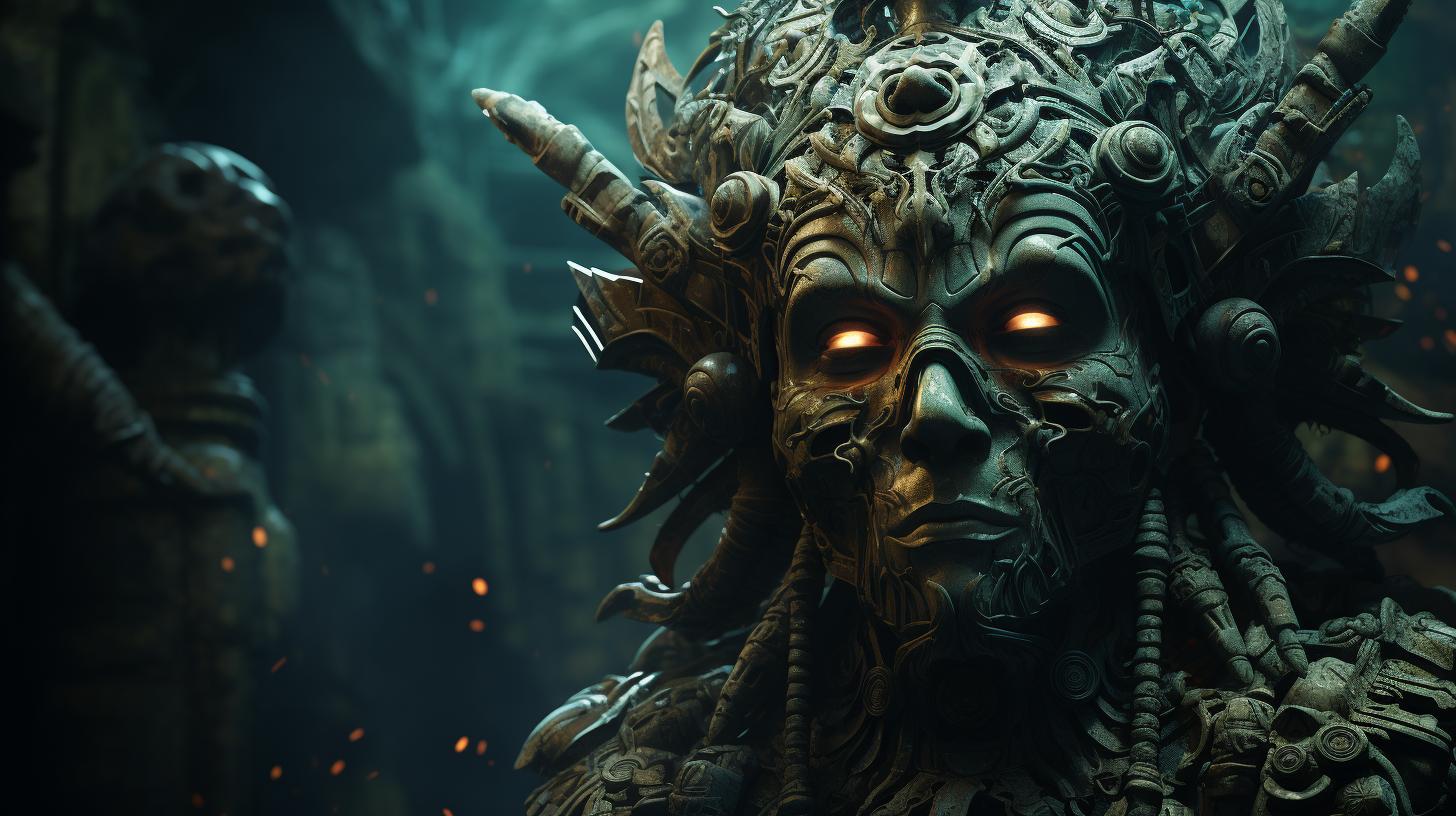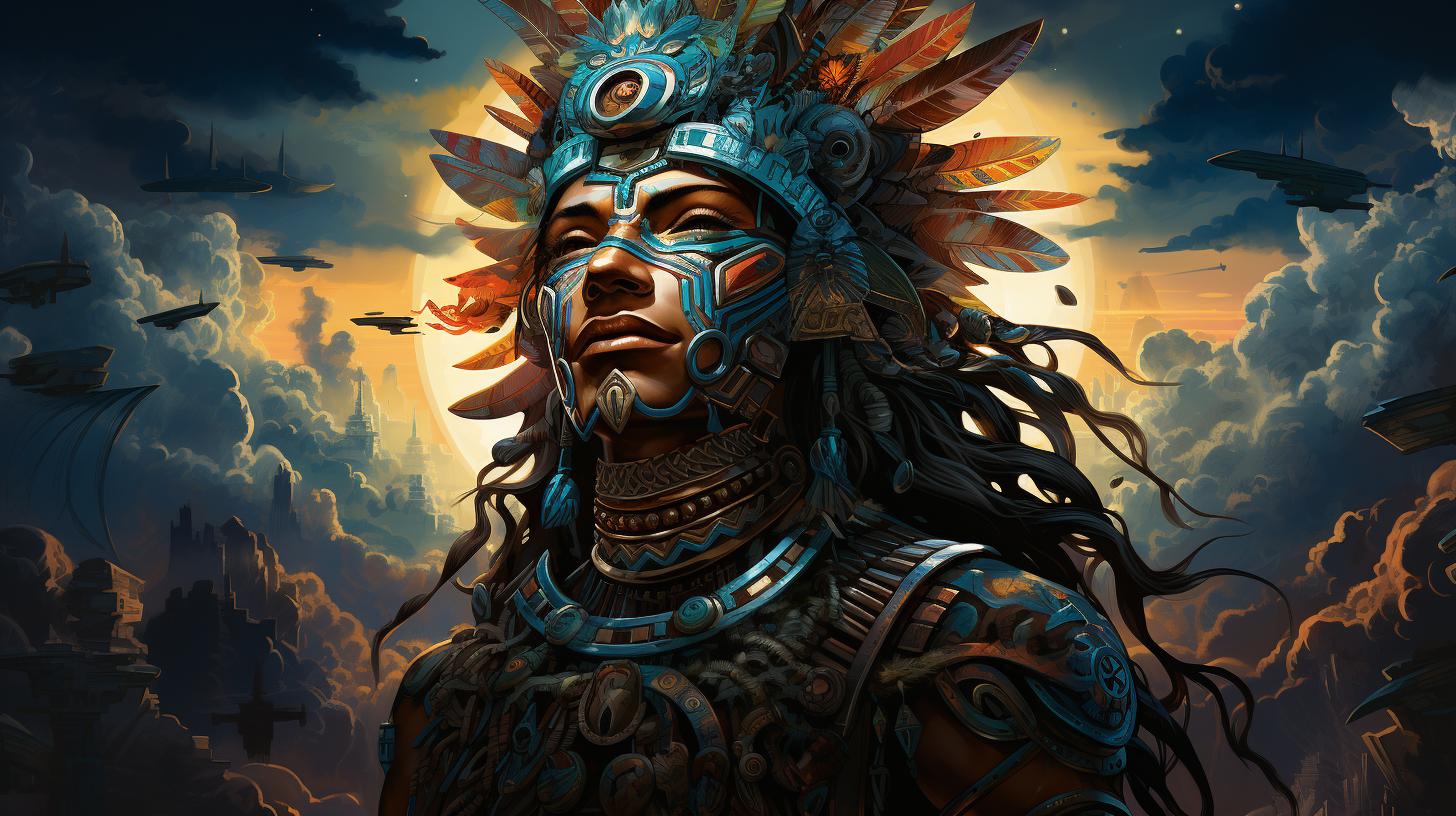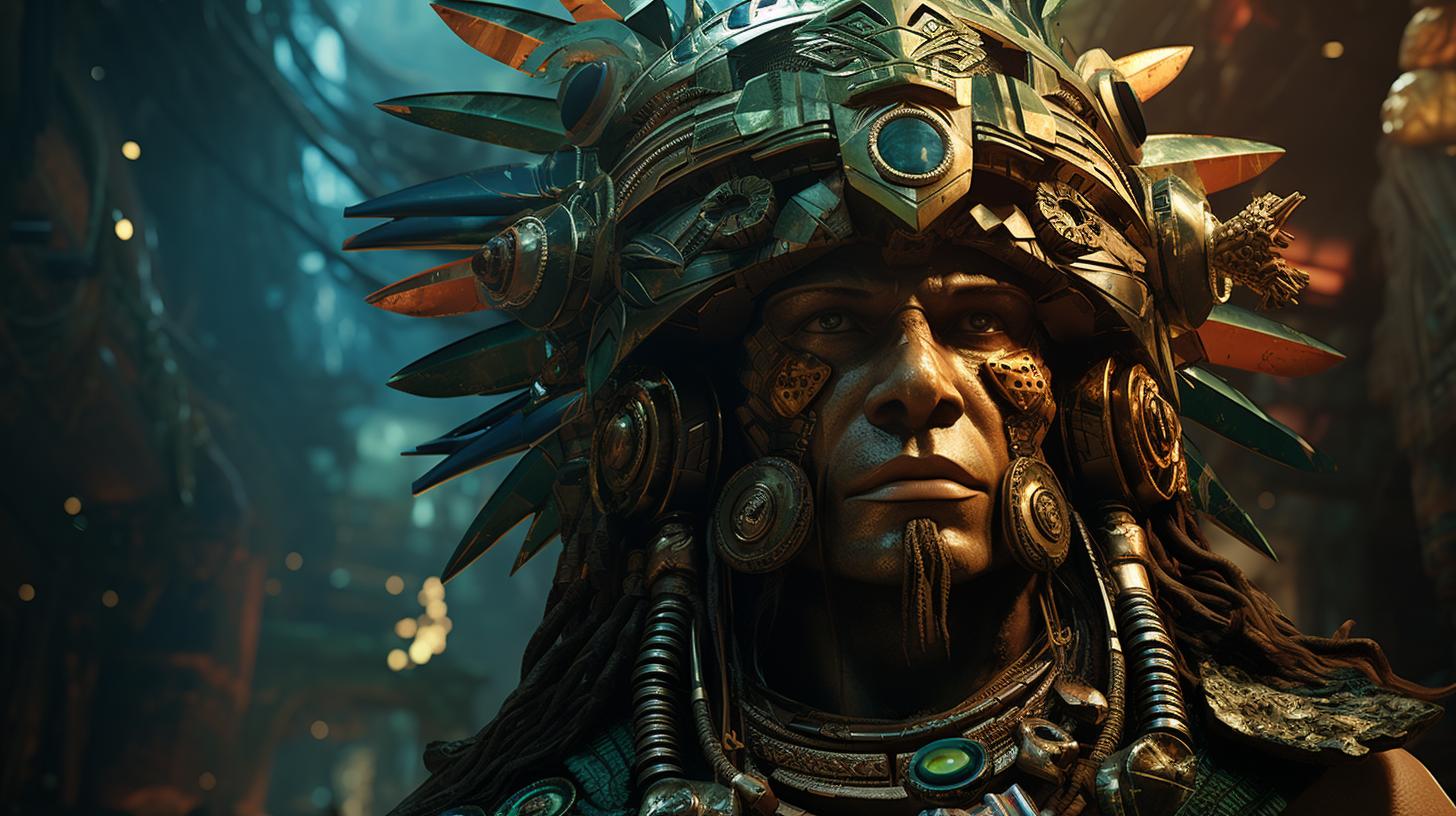‘Mayan God Maximón: Unveiling the Secrets of Guatemala’s Beloved Deity’
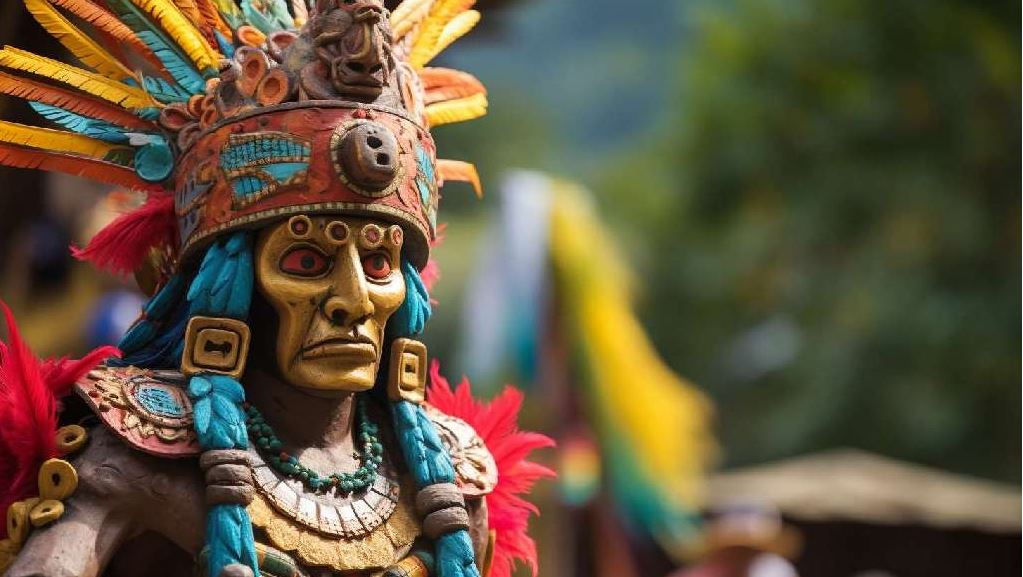
The Mayan god Maximón, also known as San Simón, holds immense significance in Guatemala. This beloved deity is a unique blend of historical, biblical, and Mayan mythological elements. Maximón is often depicted as a well-dressed man with a hat, although his appearance may vary across locations.
This article delves into the origin, representation, rituals, and modern perception of Maximón, shedding light on this captivating figure in Guatemalan culture. Join us on this journey to explore the captivating world of Mayan God Maximón.
The Origin and Significance of Mayan God Maximón
Maximón, also known as San Simón, is a revered figure in Guatemala with deep historical and cultural roots. This section delves into the captivating origins and the significant cultural significance of Mayan God Maximón.
The Mythological Roots of Maximón
Maximón’s mythological origins can be traced back to ancient Mayan beliefs. He personifies a blend of historical, biblical, and mythological elements, creating a unique and fascinating deity. While the exact genesis of Maximón remains fragmented, it is believed to stem from the syncretism of Mayan religion with Spanish Catholicism during the colonial period.
This fusion resulted in a complex character with diverse characteristics, reflecting the intricate tapestry of Mayan mythology.
The Cultural Significance of Maximón in Guatemala
Maximón holds immense cultural significance in Guatemala, especially within indigenous communities. He embodies a connection between the ancient Mayan traditions and the present-day cultural practices. Maximón’s worship acts as a way to honor ancestral roots and preserve cultural identity.
The rituals and veneration associated with Maximón are deeply interwoven into the fabric of Guatemalan society, showcasing the enduring power and importance of this revered deity.
The Representation and Traits of Maximón
Maximón, the revered Mayan god, is depicted in various forms and attires across different regions. His representation showcases the rich diversity within Mayan culture and beliefs. This section explores the varying depictions of Maximón’s appearance, as well as the symbolism behind his attire.
Maximón’s physical depiction differs from one location to another, reflecting the unique interpretations of this revered deity. In some regions, he is depicted as a well-dressed man wearing a suit, often adorned with colorful embroidery.
Other representations portray Maximón with different facial features, such as distinct hairstyles, beards, or mustaches. These variations highlight the local traditions and cultural influences shaping Maximón’s portrayal.
Furthermore, Maximón’s appearance can differ between ceremonial contexts and everyday worship. During festivals and important rituals, devotees may enhance Maximón’s attire with extravagant ornaments, such as jewelry, masks, or headdresses. This enhanced representation emphasizes the deity’s elevated status and the significance of the occasion.
The Symbolism Behind Maximón’s Attire
The clothing and accessories worn by Maximón hold deeper symbolism, reflecting the intertwining of historical, mythological, and spiritual elements. Maximón’s attire often includes traditional garments, such as a hat or sombrero, which has its own cultural significance within Mayan communities.
The hat, for example, represents wisdom, authority, and ancestral knowledge, bestowing Maximón with an elevated status as a divine figure. Additionally, the choice of specific fabrics, colors, and designs in Maximón’s attire may embody spiritual meanings tied to fertility, protection, or prosperity, depending on the local beliefs and traditions.
Maximón’s attire also serves as a visual representation of his ability to bridge different realms – the divine, the human, and the mythical. It symbolizes his role as an intermediary between the physical and spiritual worlds, enabling worshippers to connect with the spiritual realm through their interactions with him.
Understanding the varying depictions and the symbolism behind Maximón’s attire provides valuable insights into the complex layers of Mayan culture and spirituality.
The Worship and Rituals of Maximón
The worship of Maximón in Guatemala is deeply rooted in centuries of tradition and cultural significance. This section explores the prayers, offerings, and rituals associated with the veneration of Maximón, as well as his role in Guatemalan Folk Catholicism.
The Prayers and Offerings to Maximón
Prayers play a central role in the worship of Maximón, serving as a means of communication and devotion. Devotees gather in front of Maximón’s effigy, offering prayers for various intentions, such as good fortune, health, and protection.
These prayers are often accompanied by the burning of copal incense, believed to carry the devotees’ messages to the spiritual realm.
In addition to prayers, offerings are an integral part of the rituals dedicated to Maximón. Devotees bring an array of gifts, including flowers, candles, cigars, alcohol, and food. These offerings symbolize gratitude, respect, and reciprocity, demonstrating the devotees’ commitment to nurturing the spiritual bond with Maximón.
The Role of Maximón in Guatemalan Folk Catholicism
Maximón’s influence extends beyond the realm of Mayan mythology, intertwining with Guatemalan Folk Catholicism. This unique syncretic blend combines elements of Catholicism with indigenous beliefs, resulting in a spiritual tradition that is both deeply rooted and constantly evolving.
As part of this syncretism, Maximón is often associated with various Catholic saints, such as St. Peter or Judas Iscariot, depending on the region and local beliefs. Devotees view Maximón not only as a Mayan deity but also as an intermediary between the earthly and divine realms.
In Guatemalan Folk Catholicism, Maximón’s role extends beyond personal devotion. He is believed to possess immense power and the ability to intervene in human affairs, providing blessings or punishments accordingly. As such, individuals often seek guidance and assistance from Maximón, turning to him for spiritual guidance, protection, and resolution of various life challenges.
The rituals, prayers, and offerings dedicated to Maximón, combined with his central role in Guatemalan Folk Catholicism, form a vibrant and intricate tapestry of worship that reflects the rich cultural heritage and spiritual beliefs of the Guatemalan people.
Places and Festivals Associated with Maximón
Maximón, the revered Mayan deity, holds a significant presence in various locations across Guatemala. The worship of Maximón is particularly prominent in Santiago Atitlán, a picturesque town nestled on the shores of Lake Atitlán.
Maximón in Santiago Atitlán, Guatemala
Santiago Atitlán is widely recognized as the spiritual home of Maximón. The town’s indigenous population has embraced the deity, elevating Maximón to a central figure in their daily lives. A small sanctuary, known as “Cofradía House,” serves as the sacred space for prayer and offerings to Maximón.
Inside the sanctuary, visitors will find numerous representations of Maximón, adorned with colorful clothing and accompanied by various offerings. Local worshippers believe that Maximón possesses the power to grant favors, provide protection, and offer guidance.
Many individuals approach Maximón seeking prosperity, healing, or resolution in personal matters.
Devotees engage in intricate rituals and ceremonies, often performed by recognized spiritual leaders or “Cofradía” members. These rituals involve burning incense, playing traditional music, and reciting prayers to honor and seek blessings from Maximón.
The devotion and fervor with which the local community celebrates Maximón in Santiago Atitlán create an immersive and intense spiritual experience for all involved.
Notable Mayan Celebrations and Pilgrimages to Maximón
Beyond Santiago Atitlán, various regions in Guatemala hold remarkable celebrations and pilgrimages dedicated to Maximón. These events attract locals and tourists alike, offering a unique glimpse into the rich cultural traditions associated with the deity.
- Day of the Holy Cross: Celebrated on May 3rd annually, this festivity combines Catholic and Mayan beliefs. Participants parade through the streets, carrying crosses and paying homage to Maximón in joyous processions.
- Festival of San Simón: Taking place on October 28th, this day is dedicated to honoring Maximón.
Elaborate processions, traditional dances, and vibrant music fill the streets as locals and visitors come together to express their devotion.
- Pilgrimages: Throughout the year, individuals embark on spiritual pilgrimages to sacred sites associated with Maximón.
From Santiago Atitlán to remote villages, these pilgrimages offer a chance to connect with the transcendent energy of the deity and seek blessings for personal and communal well-being.
With each passing year, these places and festivals continue to reinforce the cultural significance and enduring devotion towards Maximón in Guatemala.
The continued celebration and reverence for Maximón demonstrate the profound impact the deity has on the lives and spiritual practices of the Guatemalan people.
Exploring the Modern Perception of Maximón
As we delve into the modern perception of Maximón, it becomes evident that this Mayan deity continues to hold immense relevance and popularity in Guatemala. This section aims to shed light on both the enduring admiration and the controversies surrounding Maximón’s worship.
The Ongoing Relevance and Popularity of Maximón
Maximón’s worship remains deeply ingrained in Guatemalan culture, particularly in the region of Santiago Atitlán. Many people still visit his shrines and participate in rituals to seek blessings, protection, and guidance.
Devotees believe that Maximón possesses the power to intercede on their behalf and influence various aspects of their lives.
Despite the influence of other religious traditions and secularization, Maximón’s popularity persists. This not only reflects the deep spiritual beliefs held by the Guatemalan people but also showcases the adaptability and resilience of their cultural heritage.
Controversies and Criticisms Surrounding Maximón’s Worship
While Maximón’s veneration enjoys widespread support, it is not without its share of controversies and criticisms. Some individuals criticize the syncretism between Mayan traditions and Catholicism present in Maximón’s worship, viewing it as a deviation from pure religious practices.
Additionally, issues of commercialization and exploitation have been raised, as the popularity of Maximón has fueled a tourism industry focused on his shrines. Detractors argue that the commodification of religious practices can dilute their authenticity and lead to the misrepresentation of indigenous cultures.
Furthermore, there have been concerns raised about the perpetuation of gender stereotypes in Maximón’s representations, which predominantly depict him as a male figure. These critiques question the potential exclusion and marginalization of other genders within the context of Maximón’s worship.
- In conclusion, the modern perception of Maximón reveals both the enduring relevance and the controversies surrounding his worship. While he continues to be revered as a powerful deity in Guatemala, debates surrounding syncretism, commercialization, and gender representation highlight the complexities of his veneration in contemporary society.
.
.











